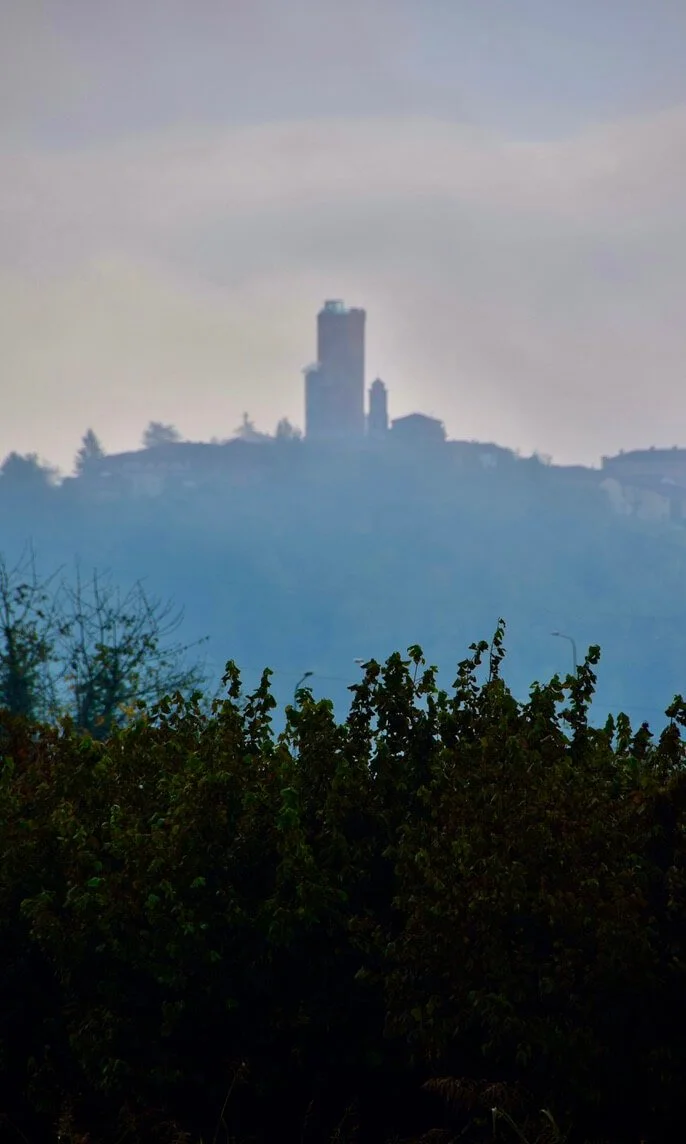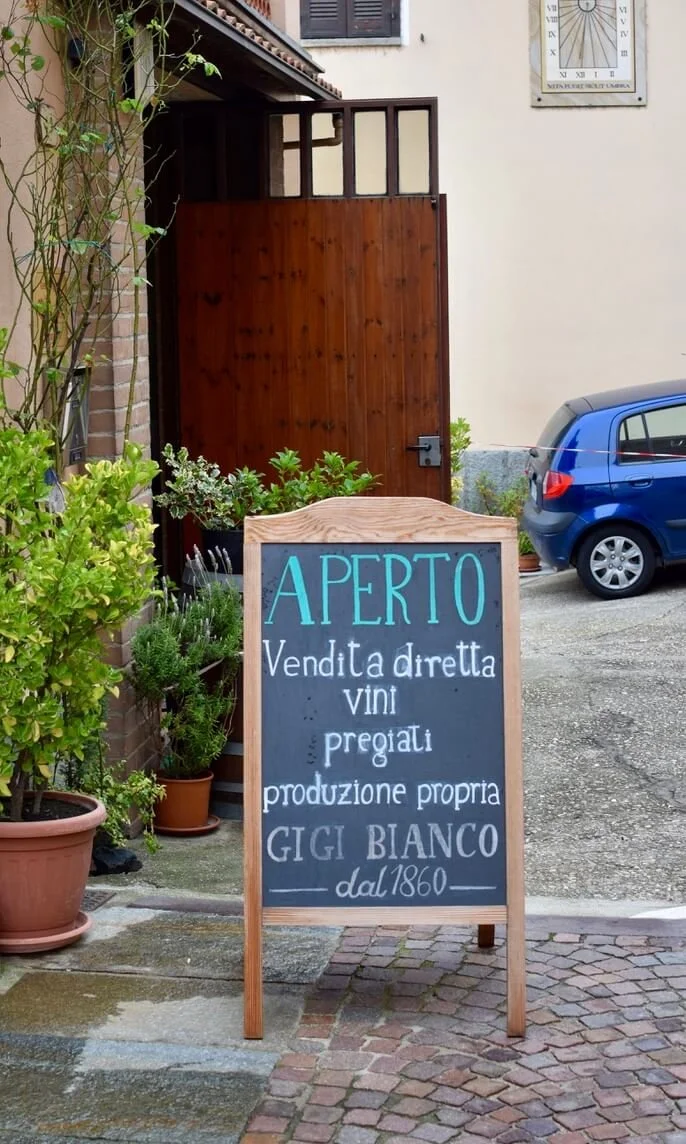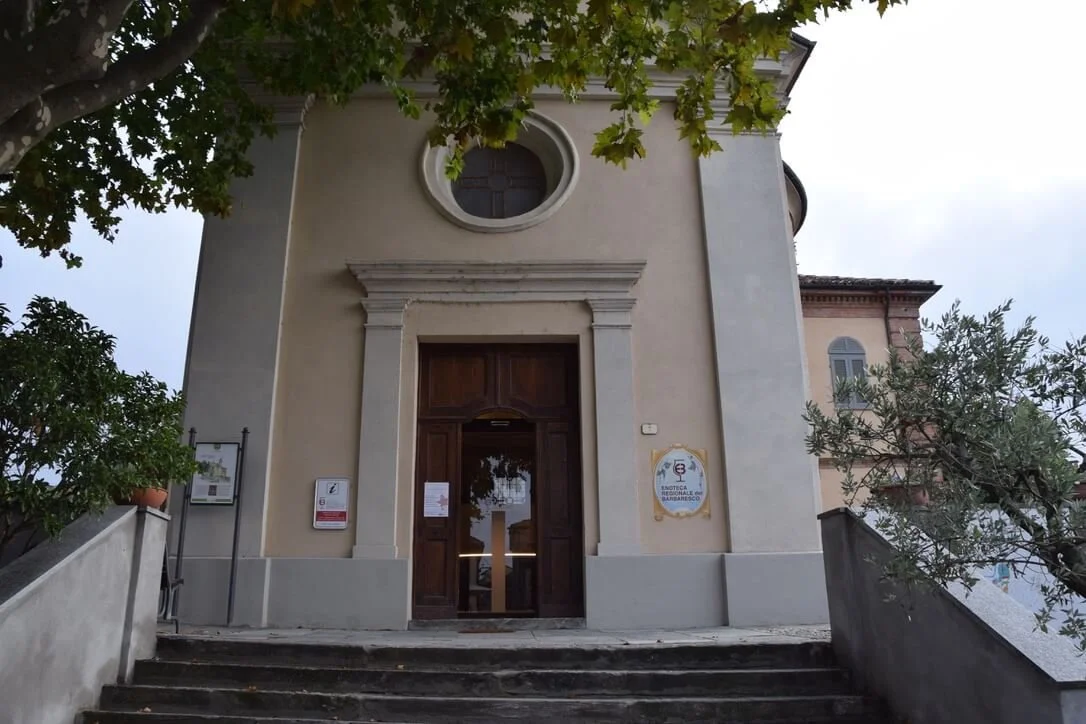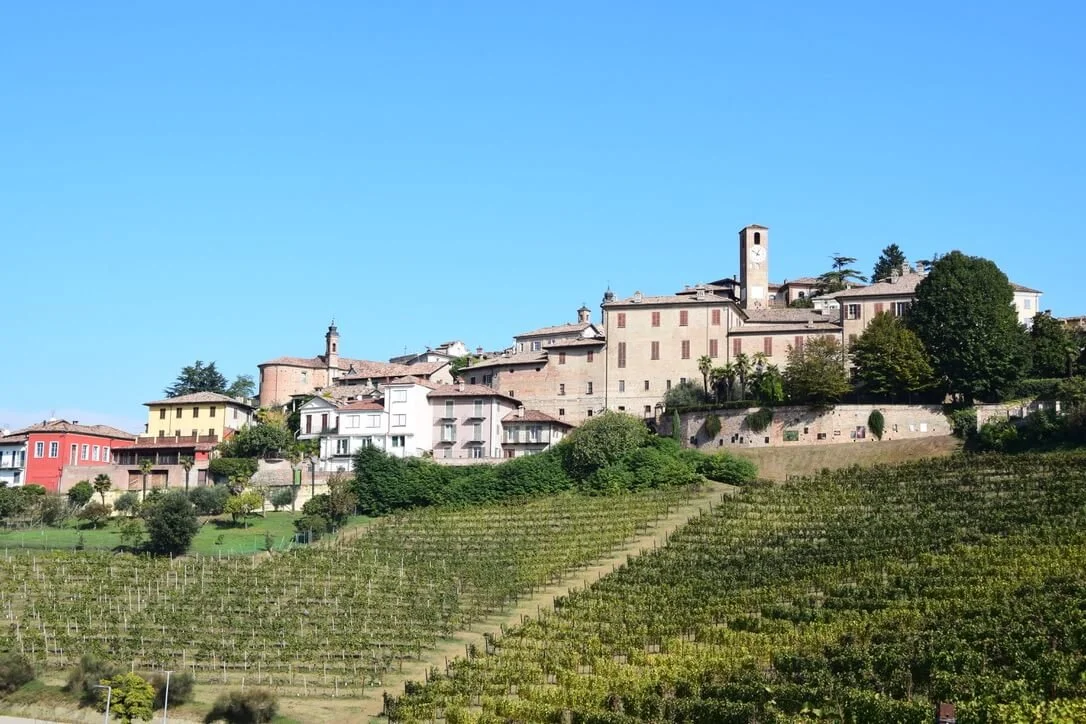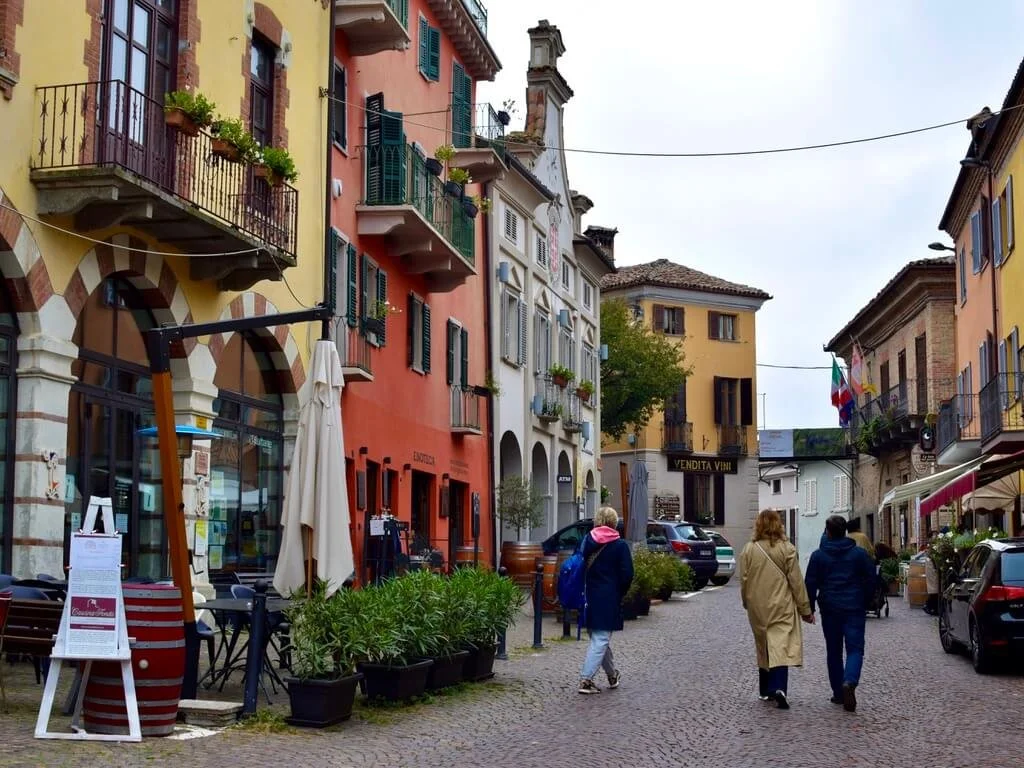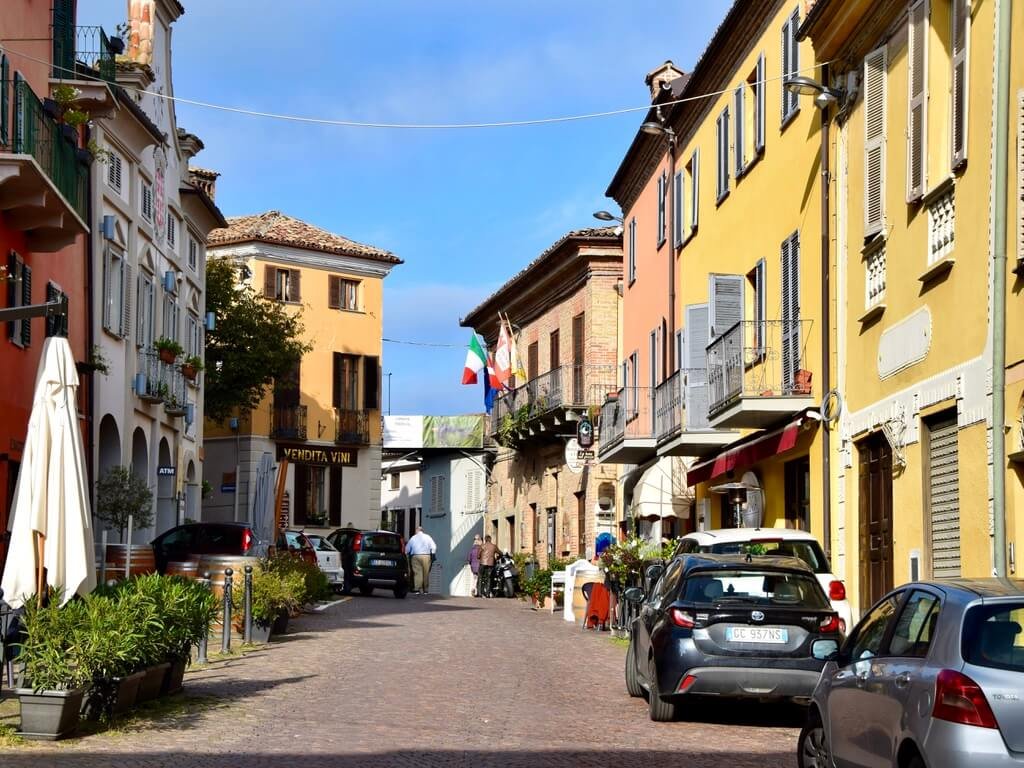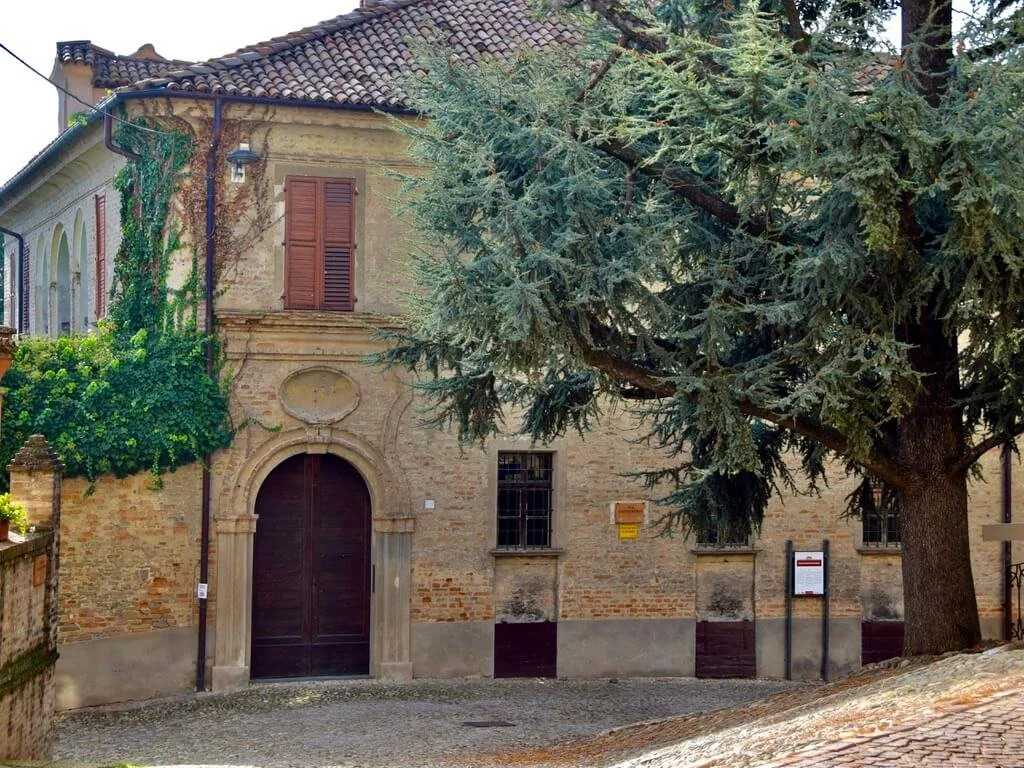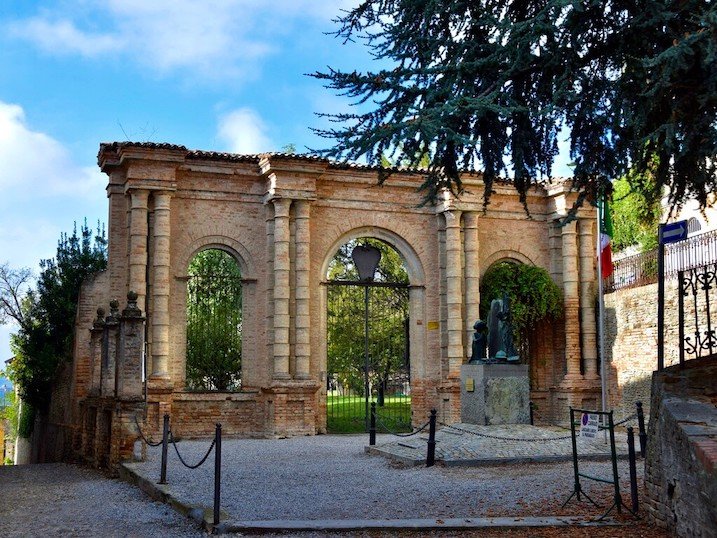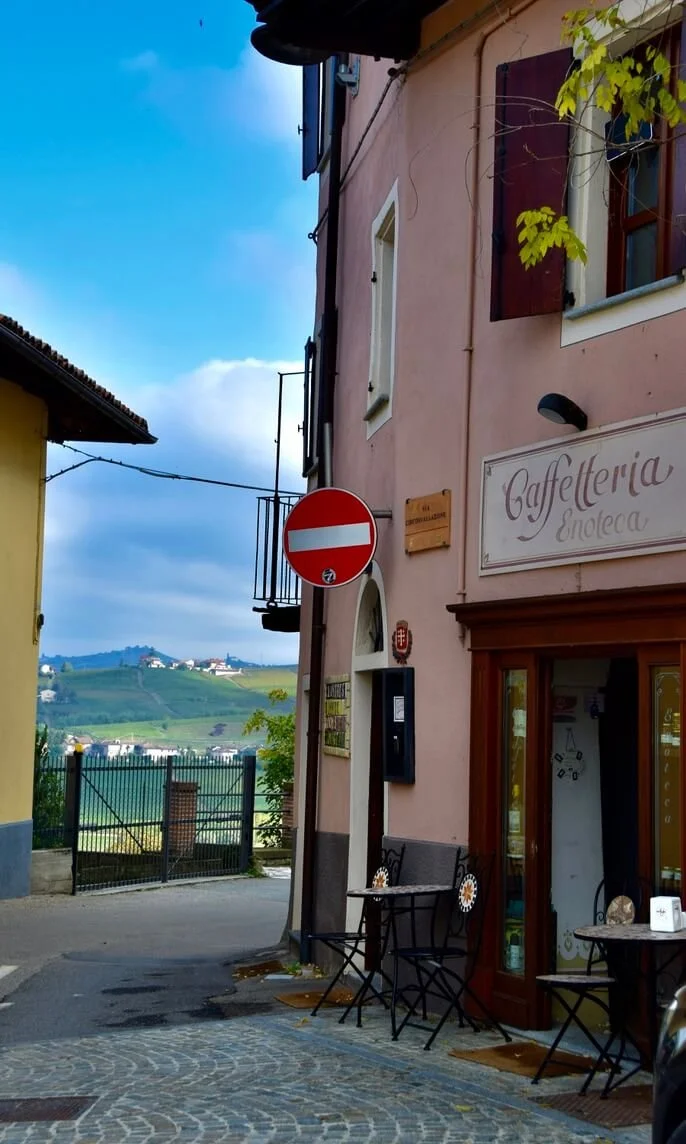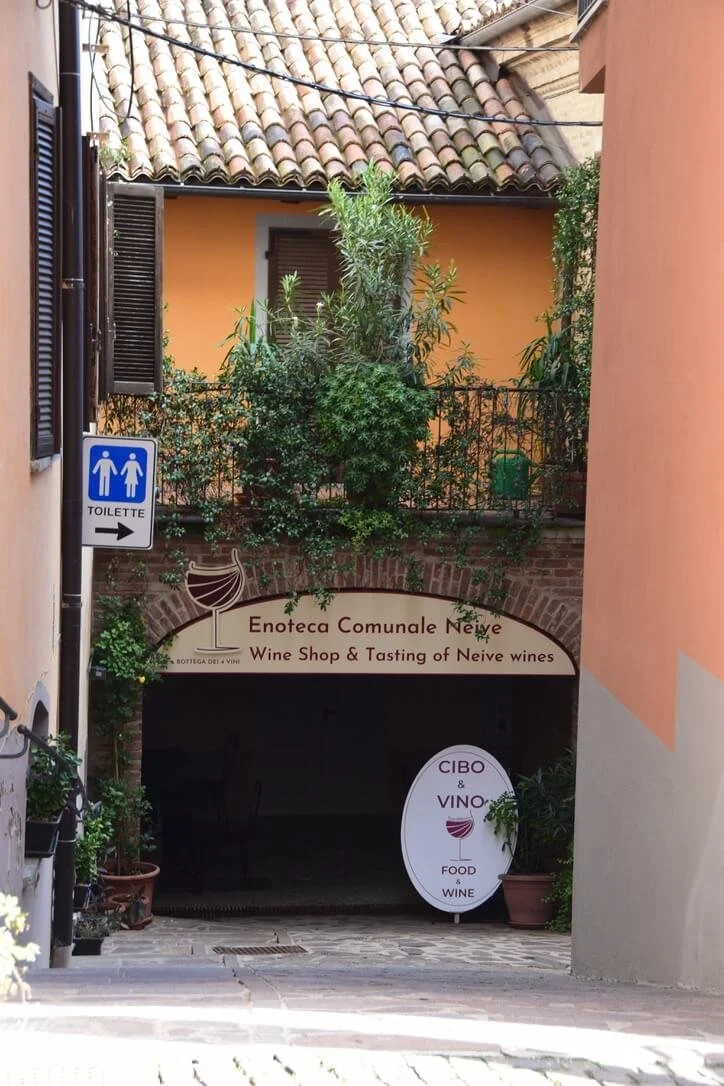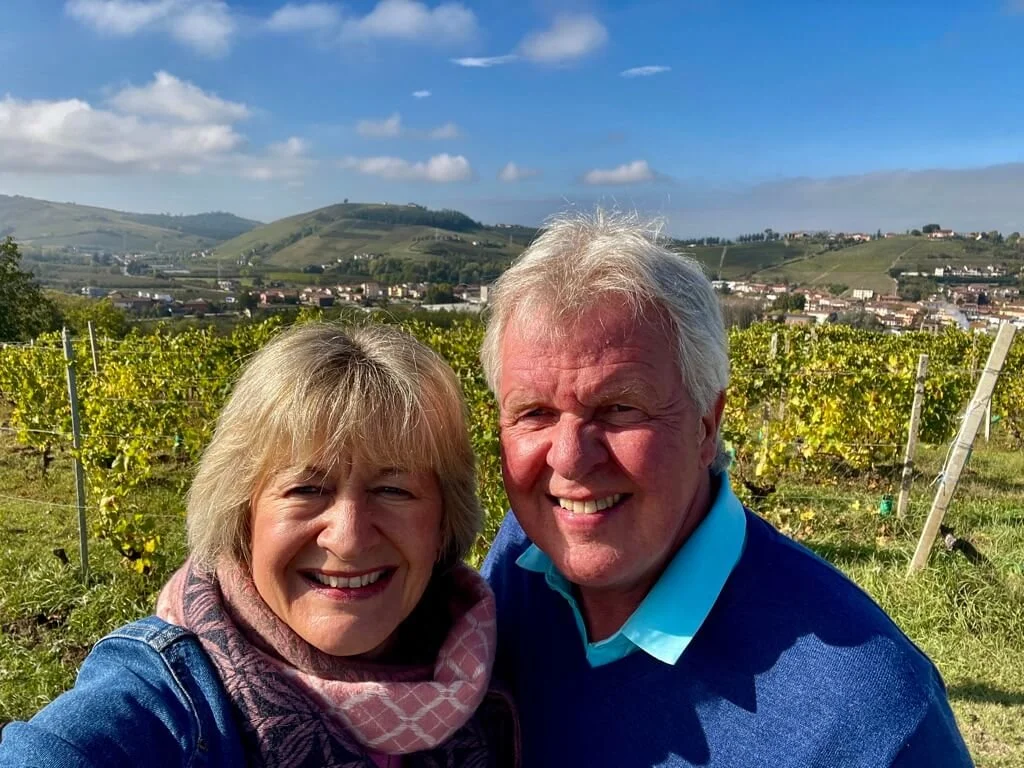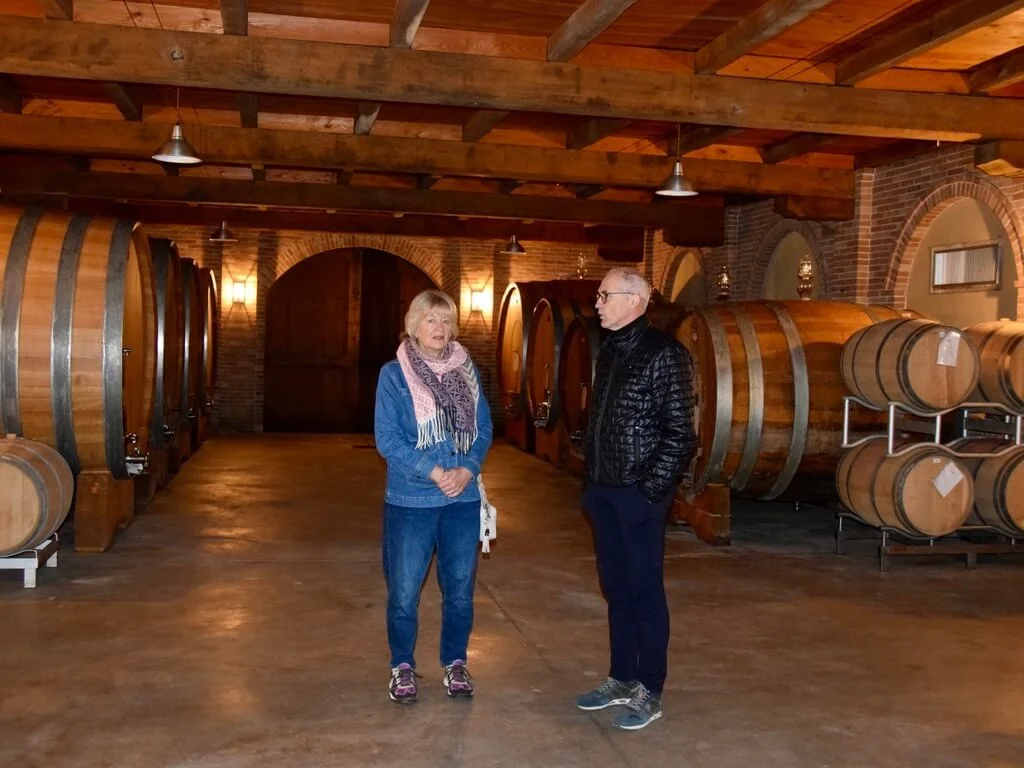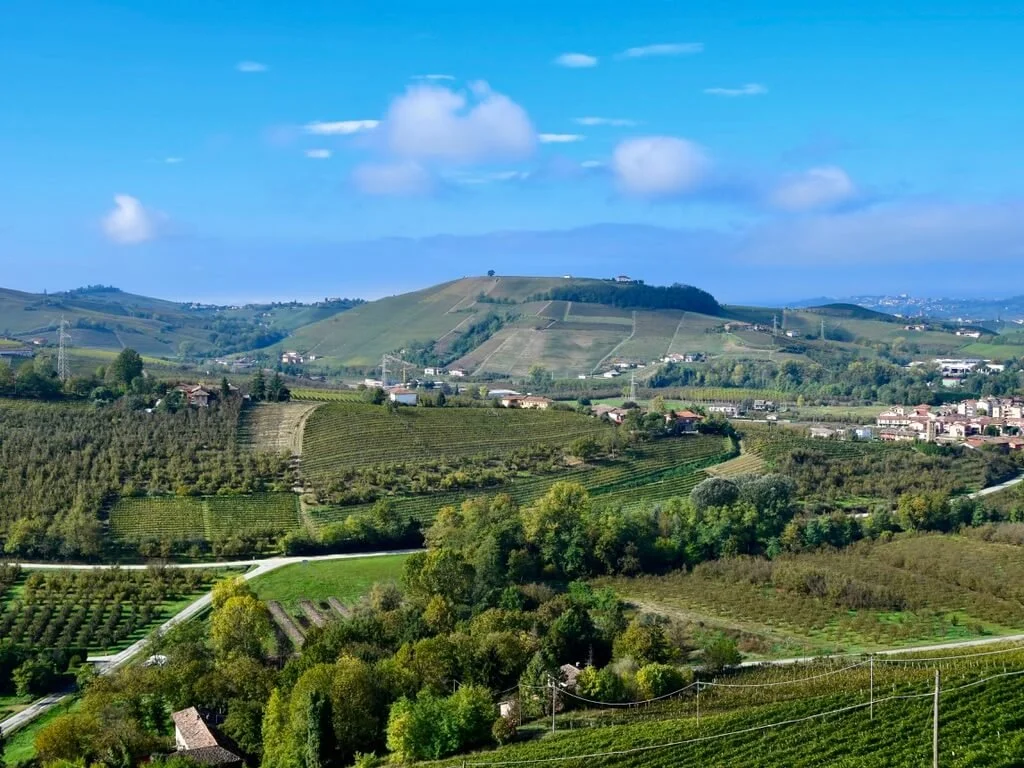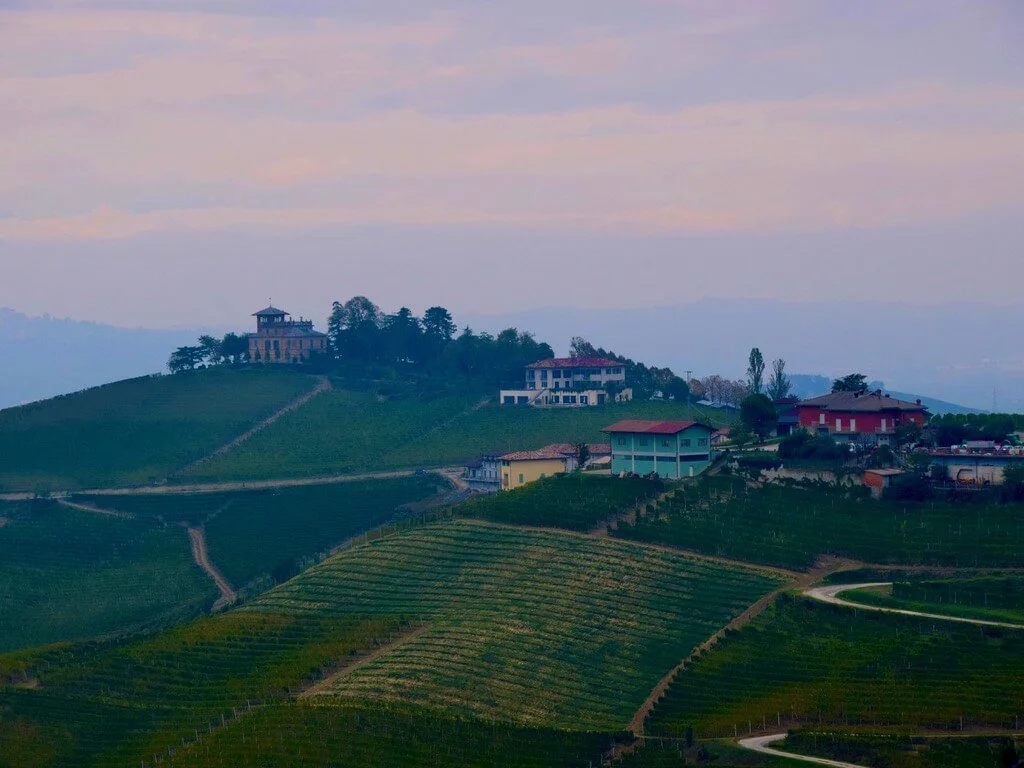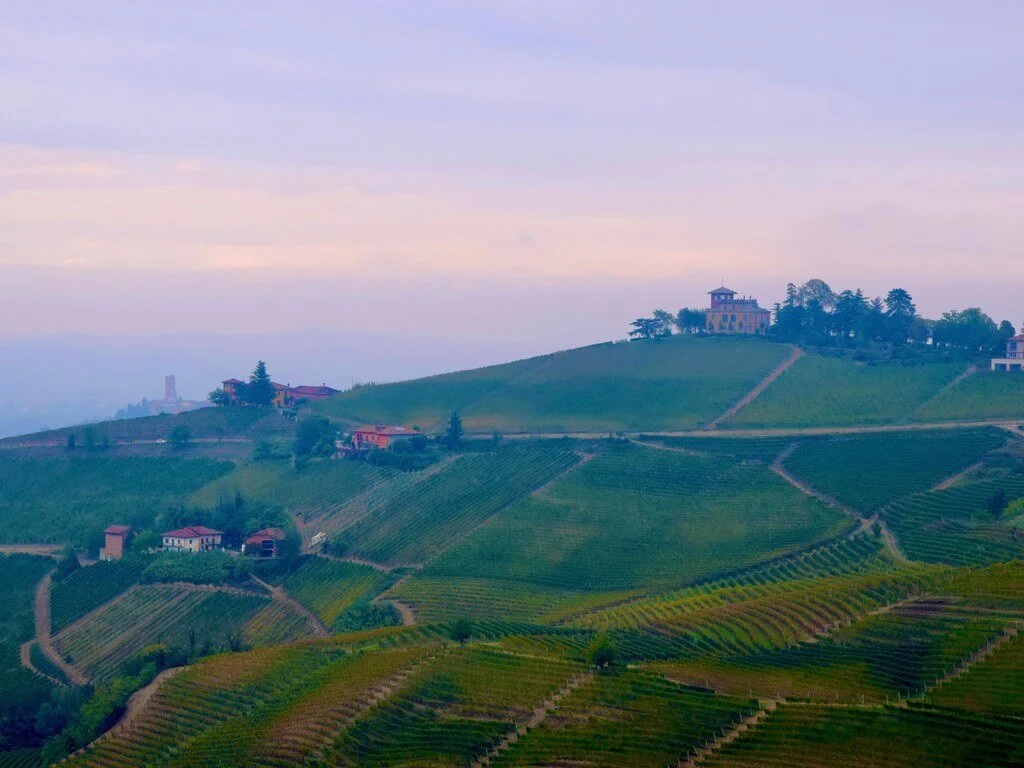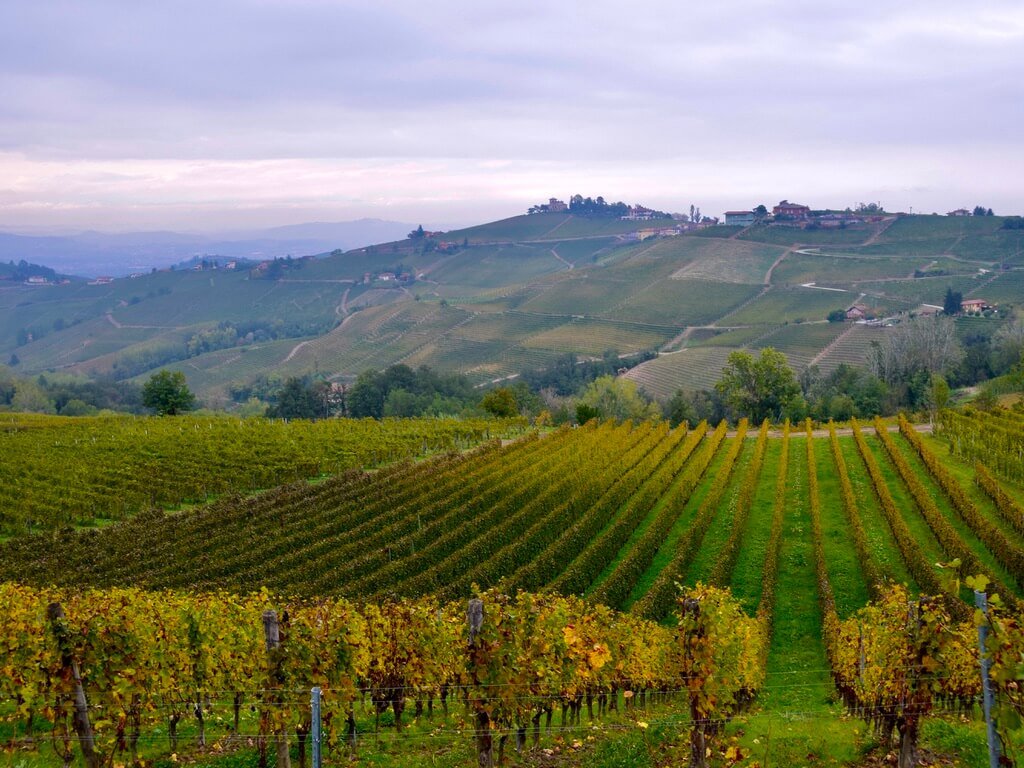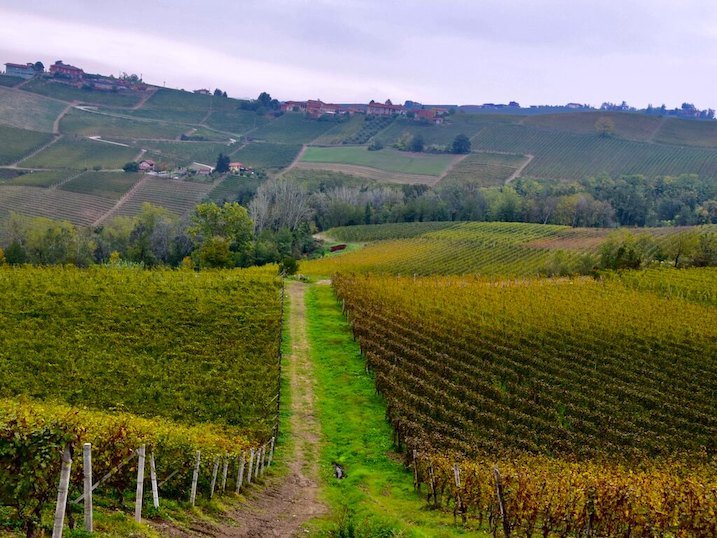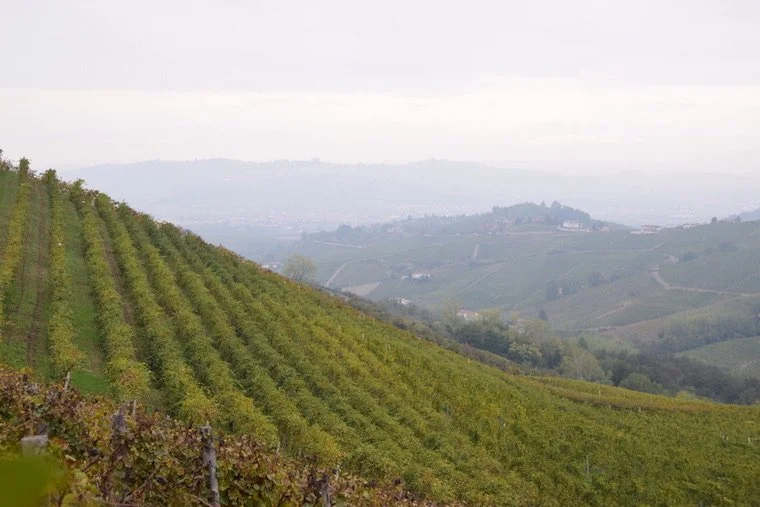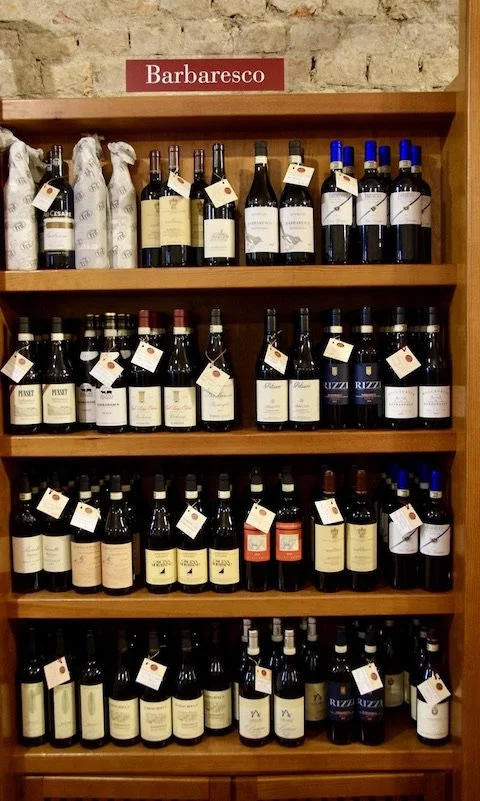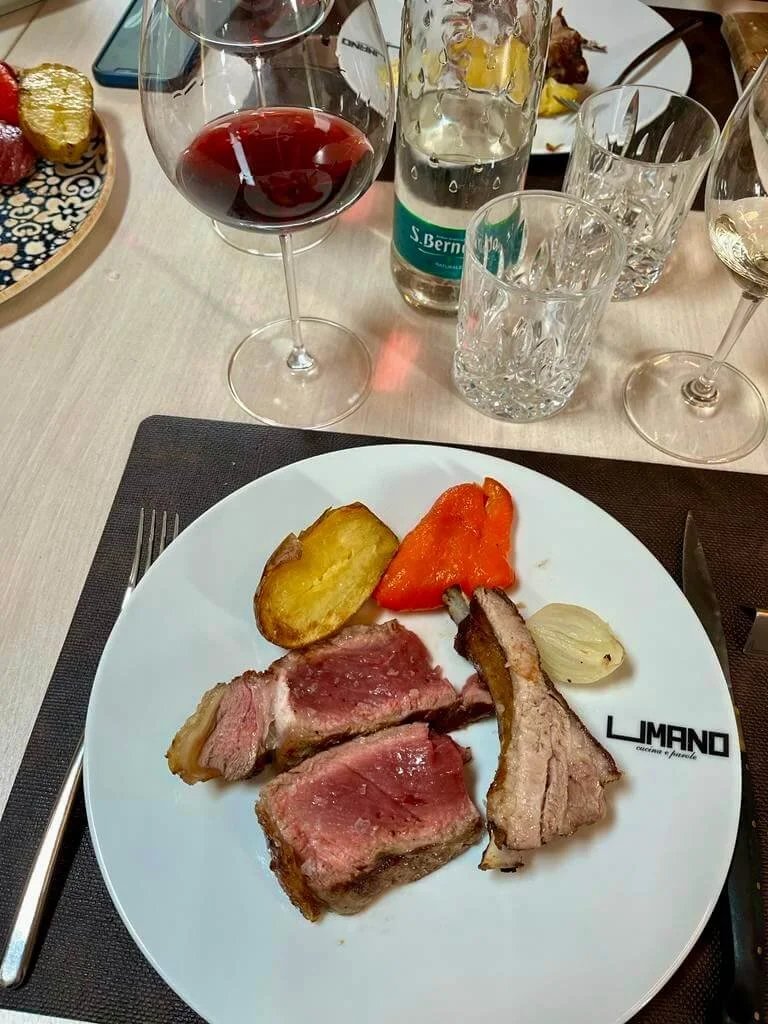Discover Barbaresco Piedmont
Autumn in Barbaresco, Piemonte - Source: Winekeller
Barbaresco is one of the top 2 wine regions of Piedmont in Italy, the other being Barolo - learn more about visiting Barbaresco and its famous Italian red wine..
Wine produced in the Barbaresco Italy wine region is probably slightly less famous than its neighbour, Italian Barolo wine, but they are both made from the Nebbiolo grape which grows so well in the Langhe hills and they are both world-famous red wines from Piedmont.
During our stay in the Langhe Piemonte we spent time exploring Barbaresco and discovering its wines. Read on to see what we discovered about this famous Italian red wine region and its wines!
Watch the video:
About Barbaresco Piedmont
The Barbaresco DOCG is made up of 3 townships or villages: Barbaresco, Treiso and Neive, located in the southern part of Italy’s Piedmont region, in the beautiful, rolling Langhe hills, to the southeast of the popular wine town of Alba.
The Barbaresco DOCG
Barbaresco DOCG in Piemonte
Barbaresco DOCG vineyards
Similar to its larger neighbouring wine region, Barolo, also in the Langhe hills, the climate, soils and geography make this the perfect setting for the finest expression of the late-ripening Nebbiolo grape. In Barbaresco Nebbiolo is planted mostly on the hills on the right bank of the River Tanaro in calcareous clay soils. The total surface area in Barbaresco under vines is some 1800 acres, spread around the villages of Barbaresco, Treiso and Neive, with about 100 acres in a hamlet of Alba called San Rocco Seno d’Elvio.
Although there has been a lot of planting in more recent years, Barbaresco has less than half the vineyard area as Barolo. For more information about the terroir in Barbaresco, see here.
Barbaresco wines
Barbaresco produces very tannic wines which need ageing. The alcohol strength is typically 12.5-13.5% and the wines have lots of fresh acidity as well as the strong tannins.
The climate here is very much influenced by fog and humidity from the Tanaro river. The older soils, which contain more limestone give more structure and tannins to the wines and the further south you go, the more sandstone and the more elegant the wine.
Morning fog in Barbaresco - Source: Winekeller
The beauty of nature - Source: Winekeller
Barbaresco’s finest ‘crus’
The finest, most prestigious vineyards lie around the village of Barbaresco and these are known for their finest red ‘Nebbiolo’ wines, including Asili, Martinenga and Rabajà (there are about 600 acres of vines producing Barbaresco).
East of Barbaresco is the village of Neive and here the vineyards are planted with more Barbera, Dolcetto and Moscato than Nebbiolo, in fact Neive is known as ‘the land of 4 wines’. However the Nebbiolo from the best sites here are very highly rated (in Neive there are some 630 aces producing Barbaresco). In the south, on higher ground, lies the village of Treiso. Here Dolcetto is primarily planted, but where Nebbiolo is grown, the wines tend to be more elegant and perfumed (about 400 acres producing Barbaresco).
As for the whole of Italy, single vineyard wines are a more recent phenomenon and an official list of single vineyards - or ‘crus’ - was introduced in 2007, known as the ‘Menzioni Geografiche Aggiuntive’, so you can look for these on the label.
A growing number of smaller producers have introduced organic and biodynamic processes in recent years.
Barbaresco is a garnet red wine with orange highlights and a ruby tinge whilst young, with a fruity perfume. As it ages it becomes more spicy, with notes of vanilla, cinnamon, cherry, apple, peppercorns, liquorice and tobacco.
Barbaresco's world-famous vineyards - Source: Winekeller
Barbaresco food pairing
The complexity of Barbaresco means it is a flexible food pairing wine. It goes well with traditional dishes from Piedmont, including game, various meats and roast meats, cep mushrooms, well-aged cheeses, pasta with ragu sauce or polenta.
Barbaresco vs Barolo
Nebbiolo ripens earlier in Barbaresco than in Barolo, mostly due to the influence of the River Tanaro and the vineyards being located on warmer, lower land. Barbaresco wines tend to be a bit lighter than Barolo wines, due to the region being located further east.
This lighter style of wine is also reflected in the minimum ageing times of the two wines - 26 months of which at least 9 months is in oak, and 50 months for Barbaresco Riserva, compared with Barolo’s 38 months of which 18 months is in oak, and 62 months for the Barolo Riserva.
Barbaresco wine also matures faster than Barolo and is normally at its best between five and 15 years of age.
The rise of Barbaresco
Gaja in Barbaresco - Source: Winekeller
The impressive Gaja winery - Source: Winekeller
For a long time, Barbaresco wines were considered the poorer relation to Barolo wines, but Barbaresco emerged from Barolo’s shadow in the 1960s, to win recognition for its intense, yet elegant wines. This was mainly down to two producers, the charismatic Angelo Gaja, Barbaresco’s most famous inhabitant and Bruno Giacosa, who showed that Barbaresco wines could match up to Barolo wines and marketed them on the world stage at prices reflecting this.
Gaja and Giacosa are still top Barbaresco producers today, along with several notable others and the Produttori del Barbaresco is one of Italy’s finest co-operatives.
Learn more about the history of Barbaresco here.
For more about Piemonte wines and the Langhe Piemonte, see later.
To discover more about Italian Barolo wine see here.
Visiting Barbaresco
Beautiful Barbaresco and its distinctive tower at dusk - Source: Winekeller
The beautiful village of Barbaresco, after which the Barbaresco DOCG wine region is named, is one of the jewels of the Langhe Piemonte Unesco World Heritage Site.
Visiting the historical centre and wandering through its main street and alleyways is like stepping back into the Middle Ages and despite its worldwide fame, it remains largely unspoiled.
Barbaresco is the beating heart of the Barbaresco region and as you enter the historic village to walk up the main street the first thing you see is a beautiful square - or piazza - with an impressive sundial and lovely plane tree. This is a good place to start - or end - your tour as it’s also the home of the regional Barbaresco wine shop, or ‘enoteca’ - see below.
Walk up the main street, passing the famous Gaja winery on your left (see earlier) and you will get a glimpse of Barbaresco’s iconic red brick tower and in front of it, the beautiful baroque church of San Giovanni Battista.
The famous, distinctive Barbaresco tower, which can be seen from miles away, sits on top of a spectacular rock that overlooks the Tanaro river and was built in the 14th century on a site previously occupied by a Roman tower. Today you can climb the tower to enjoy the spectacular views over the Tanaro river and visit the museum there.
There are restaurants, a wine bar, a tourist office and of course wineries in Barbaresco, so take your time, wander around and enjoy this unique village!
The Barbaresco Regional Enoteca wine Shop
The Barbaresco Regional Enoteca wine shop was founded in 1986 and is based in the elegant 18th century, deconsecrated church of San Donato in the heart of Barbaresco Village. The enoteca represents about 140 local producers and about 90% of the total Barbaresco production. It’s open 7 days a week and is really worth visiting to learn more about Barbaresco and its wines!
Visit to Azienda Agricola Gigi Bianco
We took the opportunity to visit the small, but top quality wine producer Gigi Bianco, located in the centre of Barbaresco. This is a 4th generation wine producer, with 3 hectares of vineyards around Barbaresco. They produce about 15,000 bottles per year and follow organic practices.
Gigi Bianco wine tasting, Barbaresco: Source - Winekeller
We tasted a range of their wines, including a Dolcetto, a Barbera d’Alba, a Nebbiolo, a Barbaresco and a Barbaresco riserva.
The wines were stunning and it was wonderful to have the opportunity to taste these top wines directly in the winery.
See here for contact details - please note that you can enjoy a free wine tasting at Gigi Bianco, but that’s only if you purchase some wine - which isn’t hard to do!
Visiting Neive
The hilltop village of Neive and in the background, Magliano Alfieri Castle: Source - Winekeller
Neive, just 4.5kms away from Barbaresco, is recognised as one of Italy’s prettiest medieval villages, perched on a hilltop overlooking the vineyards below. The village dates back to the 18th century and before that it was strategically important in Roman times, being on the route to Alba Pompeia (now Alba).
Today you can explore ‘old Neive’ and wander through the lovely cobbled streets, admiring the ancient stone buildings and former dwellings of influential families who built their residences here. The cobblestone streets form maze-like circles around the hilltop village, until you reach the main landmark in Neive at the top, the beautiful clock tower - the Torre Comunale dell’Orologio (dating back to 1224). The heart of Neive is Piazza Italia, a 17th century piazza, with colourful buildings and restaurants and the Casa dell’Orologio, which used to be the town hall.
Another notable building is the Palazzo dei Conti di Castelborgo which houses a spectacular wine collection and is the site of the first efforts to transform Nebbiolo grapes into Barbaresco wine many years ago. Just next to this is a beautiful iron gateway which in the past was an entrance to the gardens.
Visit the Bottega dei Quattro vini of Neive
In 1983 a small group of local winemakers founded ‘Bottega dei Quattro vini of Neive’ in the town hall’s wine cellars, to enable people to taste Neive’s wines. Today you can still go here for a wine tasting and to buy the local wines.
Visit to Azienda Agricola Paitin
Just outside the historic ‘perched village’ of Neive you can visit Azienda Agricola Paitin, a top, family wine producer that has played a unique and central role in the development of the wine industry in this region over centuries. The name Paitin and the two families behind the name, dedicated to Nebbiolo over 8 generations - the Pasquero family and the Elia family, are indelibly linked with Barbaresco.
Arriving at Azienda Agricola Paitin in Neive: Source - Winekeller
Today the family farms about 20 hectares of vineyards and produces some 100,000 bottles per year. 20-30% of Paitin wines are sold in Italy, but the rest is exported, with key markets including the USA, the UK, Japan and Switzerland. Barbaresco represent some 40-50% of the wines produced, but Paitin also produces Nebbiolo, Barbera, Dolcetto and Arneis wines. The oldest wines are about 70 years old.
Paitin has been certified organic since 2015 and some biodynamic principles are also followed.
We were treated to a wonderful introduction to Paitin and a tour of the winery, led by Giovanni Pasquero Elia as well as an excellent tasting of wines from the 2020 vintage, including a Nebbiolo and 3 different Barbaresco wines from 3 different vineyards - Faset, Basarin and Serraboelle. We can highly recommend visiting Paitin - the wines are indeed impressive, but so is the story and the history!
Contact Paitin here to arrange a visit and tasting.
Visiting Treiso
If you travel south of Barbaresco and Neive, you come to Treiso, a small village in the Langhe hills, offering magnificent views over the Alta Langa, Barolo, the Roero region, Asti and the Monferrato hills.
In the centre of the village stands the impressive parish church in the main piazza and there are several good restaurants here. What stands out in Treiso is its site in the centre of the beautiful vineyards and its commanding views far and wide. We enjoyed a simple walk here as the autumn daylight was fading, reminding us of what a truly beautiful place Barbaresco and the Langhe Piemonte is.
About Piemonte
Wine is produced around most of the Piedmont region in the northwest of Italy and it’s known for its famous Barolo and Barbaresco red wines - these are the most famous top DOCG wine regions in Piemonte, but there are other DOCG and DOC regions producing excellent wines - see later.
Piedmont is also known for its spectacular scenery, beautiful villages and Italian wine and food, especially dishes created around its famous food product, truffles. There are 3 famous hill districts in Piedmont that were all listed as UNESCO World Heritage Sites in 2014 - Langhe, Roero and Monferrato.
The Langhe hills
The Langhe hills are located in the south west of Piemonte around the famous wine town of Alba , forming waved hill crests, all pointing in the same direction, from southeast to northwest. Each hill has a steep side that holds up the next, gentle slope, generating a unique sun exposure, perfect for the cultivation of the Nebbiolo grape, which produces the famous Italian Barolo wine and Barbaresco wine. The Alps tower over the Langhe hills to the north and west. The Upper Langhe (‘Alta Langa’) hills face south, toward the Apennine mountains. Here the landscape is dominated more by meadows and hazelnut groves.
Beautiful Piemonte - Source: Winekeller
More about Piemonte wines
Red wine from Piemonte
Piemonte is a wine region which is all about one grape variety - ‘Nebbiolo’ - Piemonte’s late-ripening grape which produces the world-famous, tannic, long-lived and alcoholic red wines - Italian Barolo wine and Italian Barbaresco wine. Nebbiolo is named after the fog - ‘nebbia’ - which is a common sight over the Langhe hills in the Autumn.
Piemonte also produces great quantities of juicy ‘Barbera’ wines and soft ‘Dolcetto’ wines, which are designed to be enjoyed much younger than Barolo and Barbaresco wines and these along with Nebbiolo wines can offer some of Piemonte's best wines, at a fraction of the cost of a great Barolo or Barbaresco.
Traditionally, Piedmont was home to single, 100% varietals, but an increasing number of producers now experiment with red blends, for example Nebbiolo blended with Barbera, Merlot, Cabernet or even Syrah.
White wine from Piemonte
Piemonte is also home to a variety of local white grape specialities, including Cortese - the grape of ‘Gavi’ - and Muscat, the grape of the famous Italian sparkling wine, ‘Asti Spumante’ and ‘Moscato d’Asti’, extremely light, low alcohol and refreshing, ‘frizzante’ wines. The perfumed Arneis grape is also fashionable as ‘Roero Arneis’ while Favorita (the local form of Rolle or Vermentino) is also grown in Roero just north of Barolo and Barbaresco country and the native grape Nascetta is from Novello.
Many of the Piemonte wines are labelled by grape varietals, for example Nebbiolo d’Alba, Barbera d'Asti and Dolcetto di Diano d’Alba.
Top DOCG Piemonte wines
In addition to the Barolo and Barbaresco top DOCGs, other significant ones include Asti and Moscato d’Asti DOCG, Barbera d’Asti DOCG, Dolcetto di Diano d’Alba DOCG, Brachetto d’Acqui DOCG, Dogliani DOCG, Nizza DOCG, Roero DOCG and Ruchè di Castagnole Monferrato DOCG. Langhe is an important DOC as is the Piemonte DOC.
Exploring Barbaresco Piedmont
The best time to visit
Beautiful Piemonte in the Autumn - Source: Winekeller
From early Summer through to November in the Autumn is the best time to visit Piedmont and the Langhe region. The region has a temperate climate, with warm summers (Jun–Sep) and cool winters (Dec–Feb), but July to November is also peak white truffle harvest season.
Getting to Piedmont Langhe
We recommend travelling to the Langhe region, from Turin. You can hire a car and it takes just 1 hour and 15 minutes to get to Alba or you can travel from Turin airport by train direct to Alba. We would always recommend hiring a car as that gives you the flexibility to explore the beautiful villages in Piedmont.
Where to stay in Barbaresco Piedmont
When visiting the Langhe region of Piedmont we would suggest you choose one of the lovely Barbaresco villages - but another option is to stay in Alba, which offers an excellent base for exploring both the Barolo and Barbaresco wine regions.
We actually stayed in an Airbnb property in the nearby village of Magliano Alfieri, which lies on the road towards Asti and is overlooked by the stunning and imposing Magliano Alfieri Castle. It provided a great base for us for a couple of nights and we enjoyed an excellent meal here too!
Where to eat in Barbaresco Piedmont
In terms of eating out in Barbaresco Piedmont, you can’t go wrong really and there’s lots of choice!
See here for some ideas for great dining options. In term of our personal recommendations, we enjoyed two superb lunchs in Neive: one at Naevia - great pasta and risotto and one at Umano - incredible aged meat!
Out and about in the Langhe
See here for lots of ideas and inspiration about what to do in the Langhe, as well as Roero and Montferrato.
If you enjoy cycling, then visit ‘Rentyourbike.it’ to learn how to discover the Langhe by bike!
Conclusion and personal highlights
Don’t pass by Barbaresco, just because you’ve done Barolo and you think that’s Piedmont done! Barbaresco wines are different to Barolo wines and in 1-2 days you can cover the main villages of Barbaresco and it’s so worth doing! We loved visiting the different villages, tasting the different wines and perhaps above all, experiencing the incredible scenery and passion of the people for their land, their food, their wine and the incredible Nebbiolo grape!
Interested in a wine tour exploring Barbaresco in Piemonte?
Let us help you plan your trip to famous Barbaresco! Start here by sharing some information about you and your perfect wine tour with us!
We also recommend local tour operators LoveLanghe Tour and The Italian Trotter.







